

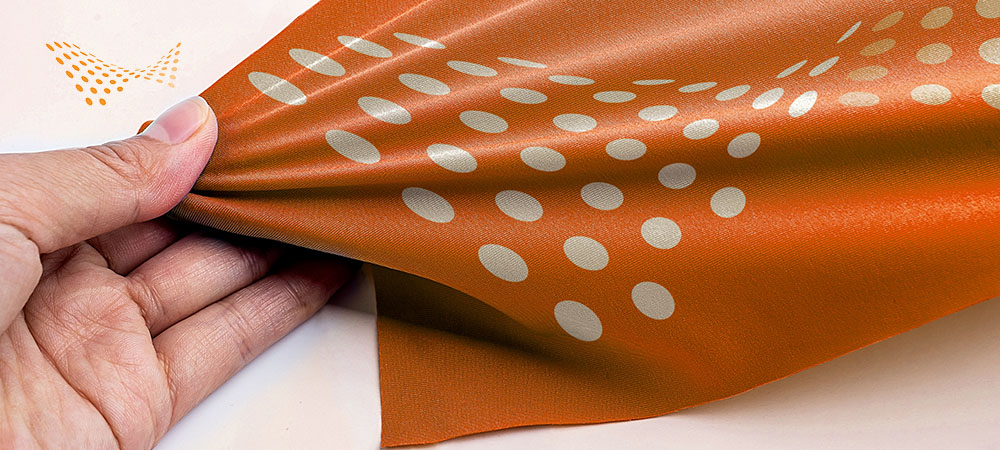
Elastic fabrics are ever-present in our daily life. Flexible, stretchy, malleable, elastic fabrics can form around a shape when force is applied. When force is removed, elastic fabrics recover to their original size and shape. Medical compression supports, socks, post-surgical garments, undergarments, sports apparel, athleisure, and swimsuits are only a sampling of the many applications where stretch, comfortable fit, and form are required.
Find Your Custom Textile Solution Today!
These flexible fabrics undergo a complex production process to achieve their many uses. In a snapshot – elastic fabrics start with fibers that are spun into a yarn, knitted into a fabric, then refined in a dyeing and finishing process depending on the application, inspected, tested, and ready for its end-use.
Elastic yarns fabrics are made from polymers, and other materials that are heated, extruded, or twisted, and bound into yarn. These can be knit, woven, or braided together.
On the world stage, elastics are referred to in many ways: elastic, elastane, elastomeric, or spandex. Commonly referred to names like elastane and spandex describe branded textiles like Lycra®. Elastic fabric may be formed from fibrous materials that have flexible properties. Elastic isn’t technically a material itself but describes its stretchy, flexible, and resilient characteristics to recover after elongation. The measurement of an elastic fabric’s resistance to force is expressed as its “modulus”. An elastic fabric can have high or low modulus. Elastic fabrics have a low modulus as they elongate (stretch) easily versus rigid fabrics that have a high modulus.
An elastic fabric may contain an elastomer — such as natural or synthetic rubber, certain polyurethanes, or some silicones — on its own or in combination with other textile materials.
A piece of clothing with an elastic additive can easily return or recover to its original shape after being stretched.
Below are some common types of elastomers used to make elastic yarns and fabrics:
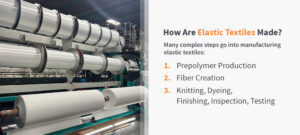
A prepolymer serves as the foundation of elastic yarns and textiles. Combined with solvents for easy handling, the material is pushed through a device called a spinneret, which resembles a showerhead with tiny holes. These holes transform the solution into fibers. The manufacturer then heats these fibers with a solvent gas and nitrogen solution, which turns the liquid polymer into solid strands.
Next, the manufacturer bundles these strands together as they exit the spinning cell. A compressed air device helps twist the fibers together to produce a yarn with a wide range of thicknesses.
Elastic textiles have an incredibly wide variety of applications. Below are a few of many examples:
Elastic textiles are useful in any situation where fabric needs to be stretched, and recover its shape making it a prized versatile type of material.
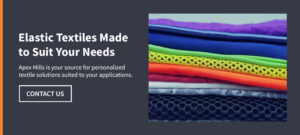
Originally founded in 1943, Apex Mills specializes in high-performance textile manufacturing. In 2023 Apex Mills acquired facilities in Woolwine, Virginia, now operating under the name “Insight Textiles”. Insight Textiles has a strong legacy of producing critical quality elastic textiles for the intimate apparel and shapewear industries.
The 240,000 square foot facility houses warp knit tricot, raschel and Rascheltronic equipment as well as an automated dye house with jet and beam dyeing capabilities.
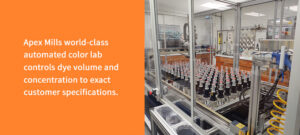
Additionally, the finishing operations provide an extension of treatments to Apex Mill’s diverse innovative fabric solutions including fire retardant finishes, anti-microbial protections, moisture management, abrasion resistance, health and wellness, sustainable, and custom finishes.
Our high-quality solutions include performance-based solid and circular knits, mesh/nettings, elastomerics, and 3D spacer fabrics . We collaborate with our customers to ensure their vision is fully communicated and understood. Our team constantly evaluates each stage of the fabric creation process to ensure the product meets your approval.
Apex Mills is your source for personalized textile solutions suited to your applications. If you’re interested in our custom solutions, you can fill out our questionnaire to help you identify sample textiles for your unique requirements. One of our fabric specialists will contact you within 48 hours.
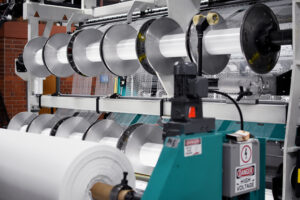
For any questions about our process, please reach out to us at any time!
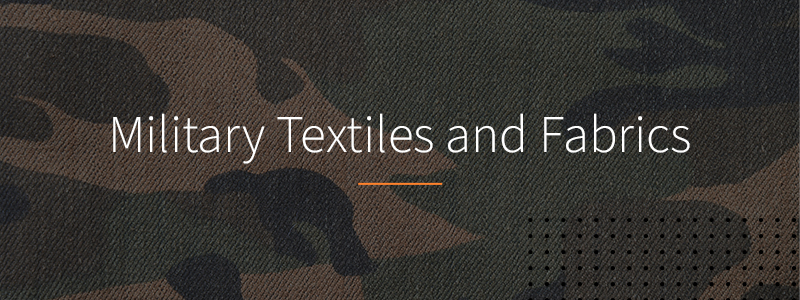



Reach your most challenging
textile goals with confidence.